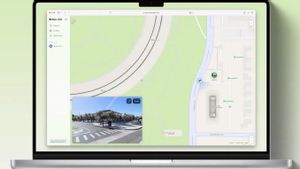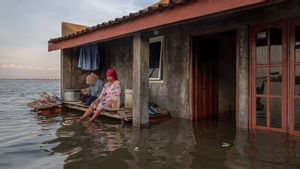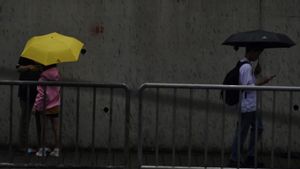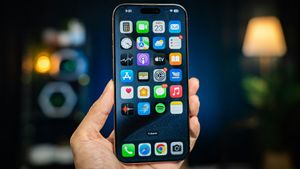JAKARTA - Analog television broadcasts have been on the air for almost 60 years in Indonesia. However, the Government through the Ministry of Communication and Information (Kemenkominfo) is migrating from analog to digital technology. This migration is a form of digital transformation within the scope of Indonesian broadcasting governance.
According to the schedule, the Ministry of Communication and Informatics will lay off in stages. The first phase of Analog TV broadcasting will be on April 30 2022, then the second phase will be on August 25, and the third phase will be on November 2 at the latest.
Difference between Analog TV and Digital TVAnalog TV
Limited to receive UHF antenna signals in analog form, making them susceptible to noise and interference. Depends on the distance of the television transmitting station. The farther away the transmitting station is from the antenna, the weaker the signal will be. Analog TV is identical to tube TV, but there are also old-school LCD/LED flat-screen TVs. Analog TVs need STB assistance in order to capture digital broadcasts. Analog TV does not have advanced features Analog TV has a limited size, so it has standard visual qualityDigital TV
Digital TV is able to process signals well from digital and analog signals. Digital TV does not depend on the distance from the transmitter. Smart TV is included in the category of Digital TV. Digital TV in Indonesia has a DVB-T/T2 transmitter system. Digital TV has interactive services and program schedules. which has been and will be broadcast Digital TV picture is clearer because it has a wide bandwidth. Digital TV supports picture quality from High Definition (HD) to 4K Analog TV DevelopmentAnalog television broadcasting has been on the air for almost 60 years in Indonesia. Launching from the Ministry of Tourism and Creative Economy of the Republic of Indonesia (Kemenparekraf) The development of Analog TV was marked by the start of the inaugural broadcast of TVRI on August 17, 1962 which was launched to make the Asian Games successful in Jakarta.
Then, the development of analog TV continued with the birth of a second television station, namely RCTI in 1989. This became a milestone for the emergence of other privately owned television stations until now.
Migration to Digital TVIn accordance with Law Number 11 of 2020 concerning Job Creation and Government Regulation Number 46 of 2021, the termination of analog broadcasting or the Analog Switch Off Program (ASO) has taken place on April 30, 2022. Phase I of Analog TV will start from 3 broadcast areas that are consists of 6 districts and 2 cities.
To be precise, that is, in Riau Province for Dumai City, Bengkalis and Meranti Regencies, Riau-4 broadcast area. Then, the broadcast area of East Nusa Tenggara-3 is in 3 regencies, namely North Central Timor, Belu and Malacca Regencies. And the broadcast area of West Papua-1 in Sorong City and Sorong Regency.
For people who have a television but cannot receive digital broadcasts, it is recommended to install a Set-Top-Box (STB) device so that they can receive digital broadcasts. Minister of Communications and Informatics, Johnny G. Plate said that Poor Households (RTM) will receive free STB assistance from the commitment of multiplexing providers (MUX), while the government is helping to provide such assistance STB.
In the implementation of ASO, there are nine multiplexing providers, including the government, LPP TVRI and 7 LPS Group consisting of MNC Group, Media Group, SCM Group, Viva Group, Trans Media Group, RTV Group and Nusantara TV.
How to Switch to Digital TV BroadcastSteps to switch to Digital TV broadcasting is easy. First is to check each television set. Just re-scan the broadcast program. Television sets that already have a DVBT2 standard tuner in them, digital television automatically can capture and broadcast Digital TV broadcast programs.
However, after re-scanning the program, and the broadcast on television is still the same as before, it means that the television set is still analog. Remember that Digital TV broadcasts have really clean pictures and sophisticated sound. So if the picture is still the same as before, it is certain that digital TV broadcasts have not been caught.
Analog TV sets require an additional device called Set Top Box (STB) DVBT2 in order to capture Digital TV signals. After the STB is coupled with the old television or tube, digital TV broadcasts will be caught on the television set.
One thing that needs to get the public's attention is to make sure when buying STB or digital television sets there is a statement that the product has been certified by the Ministry of Communication and Information. The certification mark provides assurance of the conformity of the technology, its technical specifications and safety. If the technology or technical specifications are different, the device may not be able to optimally capture Digital TV broadcasts in Indonesia.
How to Watch Digital TV Broadcasts To be able to watch digital television broadcasts, first you need to make sure that there are digital television broadcasts in your area. Second, it requires an ordinary home antenna, namely a UHF antenna in the form of an outdoor antenna or an indoor antenna which is also commonly used to capture analog television broadcasts. Third, make sure that the television at home is equipped with a DVBT2 digital television broadcast receiver. If the television at home can only receive analog television broadcasts, then you need to install a set top box decoder. The Set Top Box will help the digital television signal captured by the antenna to be displayed even though the television in your home is a television for analog broadcasting. After your television set is connected, select the Settings/Settings option then select auto scan to scan digital television broadcast programs around you.If you look at the data from Instagram @siarandigital, as of May 27, there are already several regions that can enjoy digital broadcasts from TVRI, Trans7, Indosiar, ANTV, Metro Tv, RCTI, NET., TVOne, GTV, iNews, MNC TV, and many more. Those areas are:
Aceh-1 Central Java-7 Central Java-3 Riau-1The English, Chinese, Japanese, Arabic, and French versions are automatically generated by the AI. So there may still be inaccuracies in translating, please always see Indonesian as our main language. (system supported by DigitalSiber.id)












